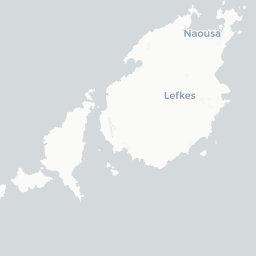






Southeast Naxos Survey 2015
Survey: Systematic fieldwalking survey
The project's starting point was to analyse the context of the settlement at Dhaskalio on Keros and the Special Deposits at Kavos on Keros in their wider context within the Mikres Kyklades and surrounding islands, following the Keros Island Survey of 2012 and 2013. However, the survey was carried out as a diachronic project, with equal emphasis given to finds of all periods recovered, thus offering as a principal result a detailed record of the extent to which southeast Naxos was occupied from the Early Bronze Age to the present. Survey teams using GPS and walking in lines of 100 m divided into segments of 20 m walked the entire coastline from Volakas in the east to Kalandos in the west. Mapping using remote controlled helicopter was undertaken for the project by James Herbst (ASCSA), the architect of the Corinth Excavations. The geomorphology of the study area, and in particular of the polygons, was studied by Myrsini Gkouma (Amsterdam). Based on preliminary ceramic examination, no Neolithic sites were recovered, with sparse indications of the Early Cycladic I period, then abundant finds of the Early Cycladic II period, with fewer traces of the Middle and Later Bronze Age. Obsidian was frequently observed, but much less often than on Keros. At Spedos particular attention was given to the cemetery and acropolis, where a central building and strong wall, not previously documented, were identified and planned. Archaic and Classical material was followed by a strong representation of the Hellenistic period, with two provisionally Hellenistic towers recorded. The later Roman and Byzantine periods were well-represented, particularly by the impressive stronghold at Irokastro near Panormos. The most frequent special finds were hand tools and rubbers made of Naxian emery, but these are not easy to date. Already it is notable that the prehistoric utilisation of southeast Naxos was intense only during the later Early Bronze Age (at Kalandos, Spedos and Panormos) and that, although there are indications of occupation during the Archaic and Classical periods, it was only in Hellenistic and later times that the area was again more densely populated. Use of the same methodology for the Southeast Naxos Survey as for the previous Keros Island Survey will permit systematic comparison of artefact densities and other parameters. Initial comparison suggests that the density of occupation on Keros in the Early Bronze Age is comparable or greater than that on southeast Naxos (even taking out of account the sanctuary at Kavos).
Active in 2015.
Renfrew, Professor Andrew Colin

